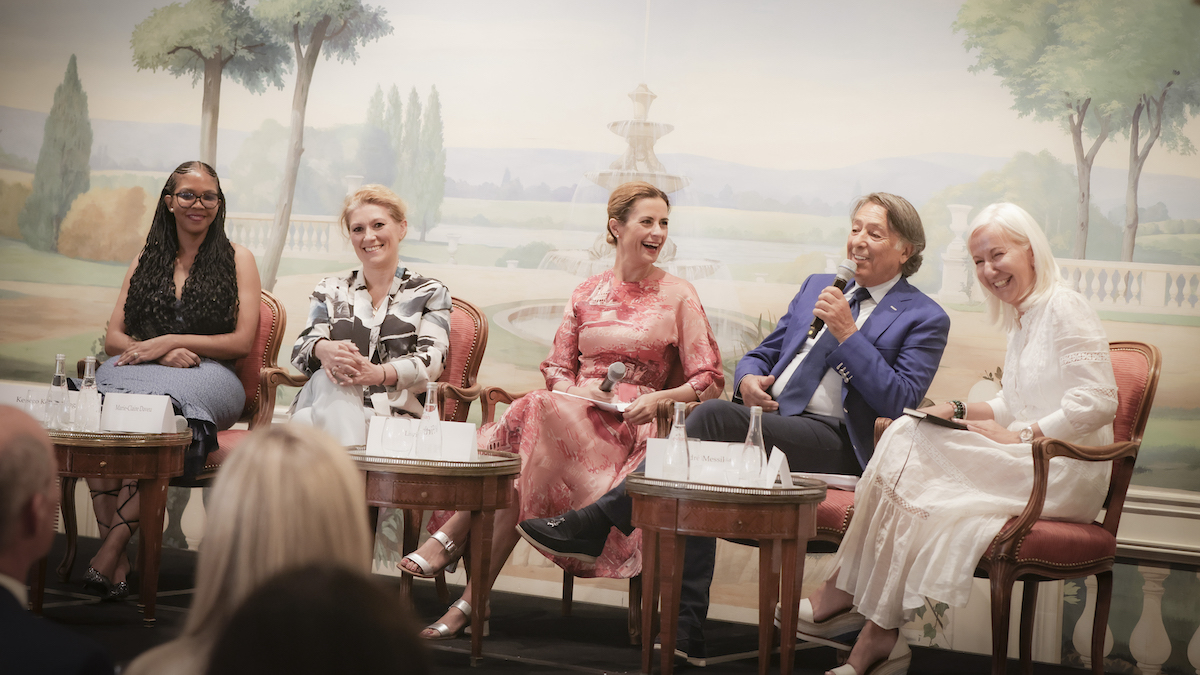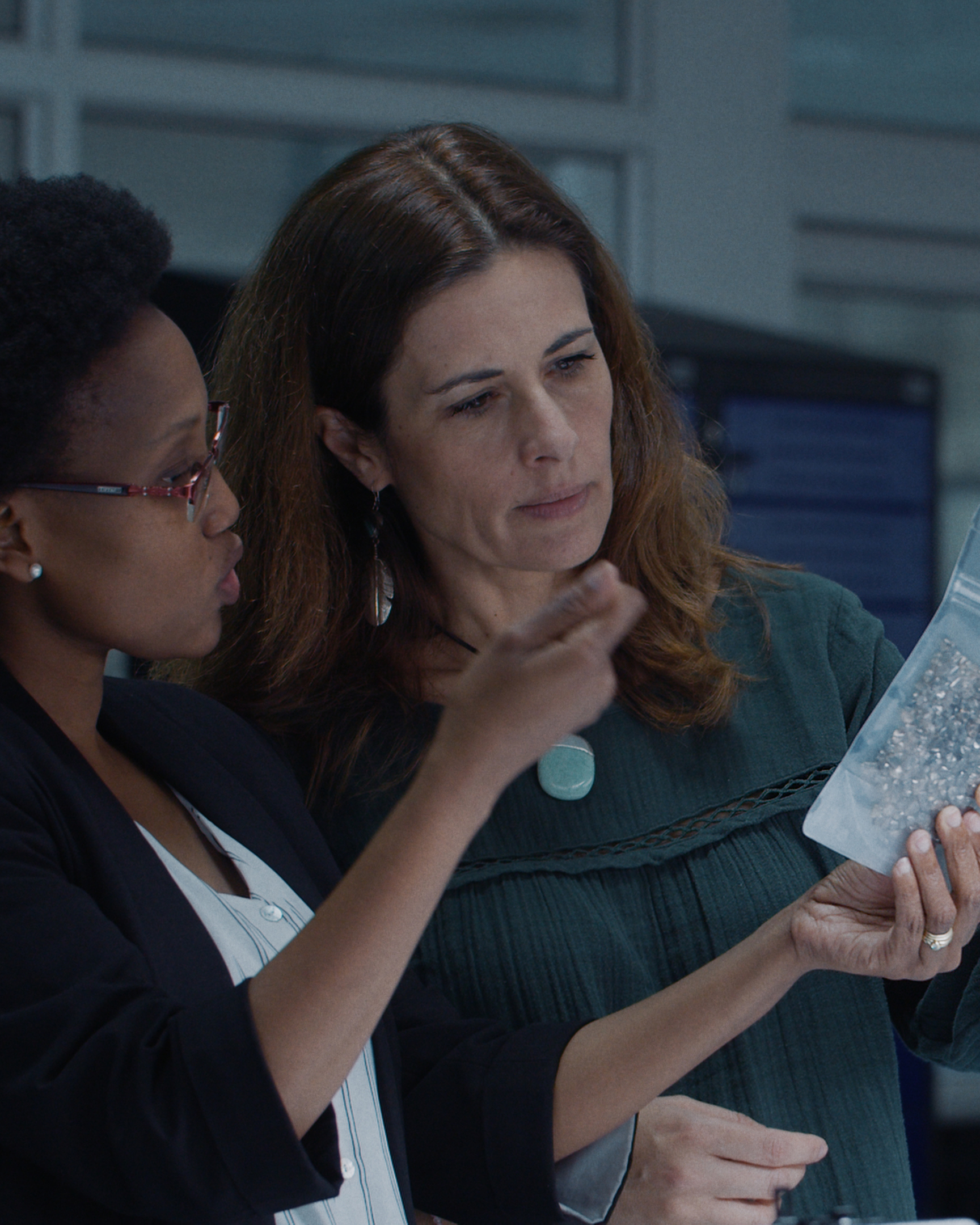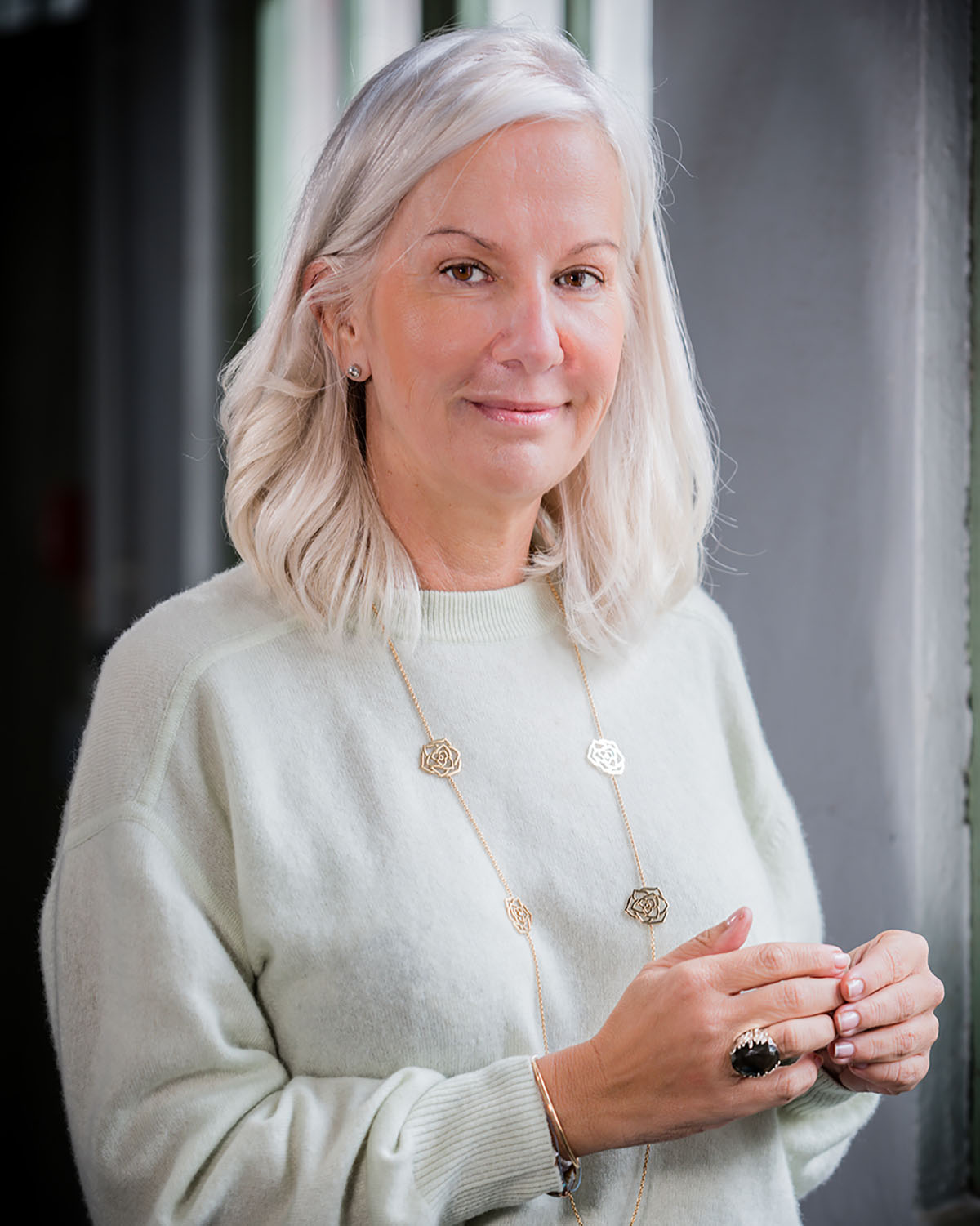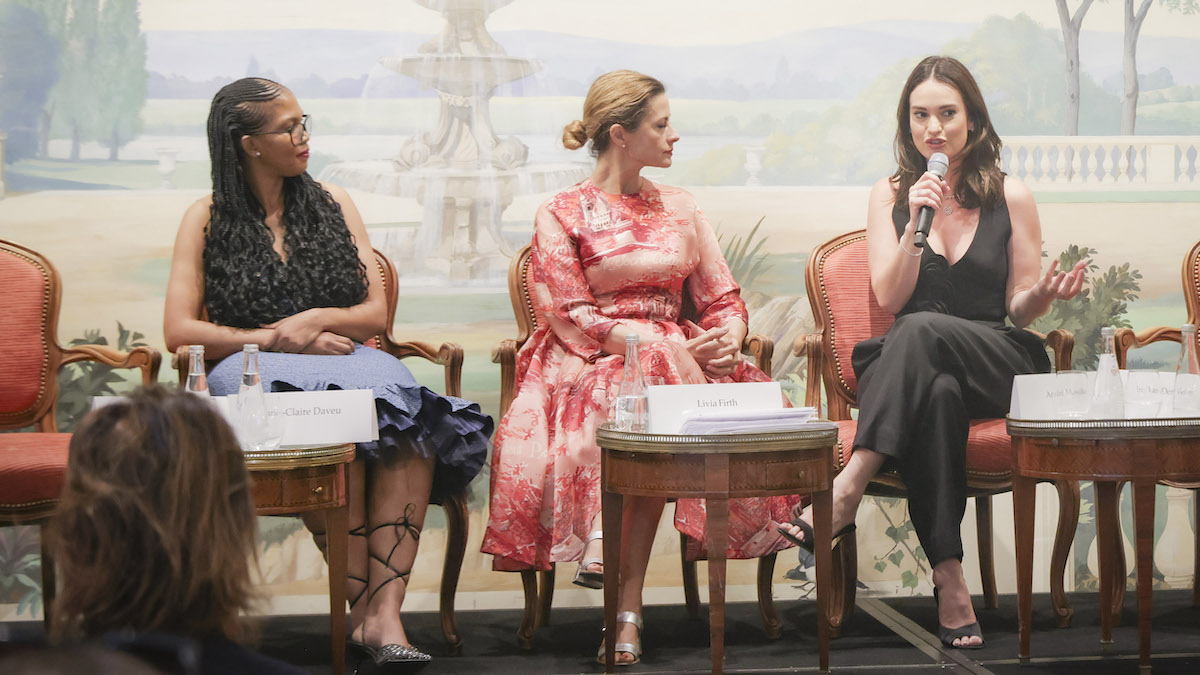Lily James and the Natural Diamond Industry Talk Sustainable Future at Parisian Event
It was a picture-perfect summer evening in Paris as natural diamond educators, retailers, journalists, and social change-makers filled the Salon Versailles, which overlooked the lush gardens at the Le Bristol Hotel.
Those who attended were in for a real treat. We’re not talking about the passed, delectable, Parisian hors d’oeuvres; more on that later. If you were not in attendance, don’t worry, we took notes.
First up was Kristina Buckley Kayel, Managing Director of the NDC. “Our goal is to raise consumer awareness and appreciation of the values of natural diamonds and the industry’s global impact, which includes providing livelihood and well-being for over 10 million people worldwide and biodiversity protection for what would otherwise be vulnerable species and ecosystems,” Buckley Kayel told the audience.
The evening was divided into three parts.

Leading the conversation was the magnificent Livia Firth MBE, Founder and Creative Director of Eco-Age, a global consulting agency that focuses on creating frameworks with science, nature, and human rights at its core. A United Nations Leader of Change, she has also been recognized with the United Nations Fashion 4 Development Award and the Rainforest Alliance Award for Outstanding Achievements in Sustainability. “When you hear diamonds, you immediately think about Leonardo DiCaprio and the film he starred in called Blood Diamond. Set in Sierra Leone during the civil war between 1991-2002, it centered around conflict diamonds, diamonds that are mined in conflict areas and financed wars. Since then, however, the industry has advanced and changed so much,” said Firth. According to Firth, one can argue that since then, the diamond industry has done more work than any other industry in advancing social and corporate responsibility. In 2003, De Beers Group played a big role in launching the Kimberley Process, an agreement established to eradicate the trade of conflict diamonds across international borders.

When we think about other industries today, like fashion, it’s a very different story. “The majority of fast fashion brands are produced in Bangladesh today, and when we think about the devastating Rana Plaza factory collapse in 2013, killing 1,134 people, in the ten years since then, little has been done to make things better in the country. In fact, it’s gotten worse with other fast fashion brands appearing in the market,” noted Firth. “When I went to Botswana in 2019 to visit Lucara’s Karowe diamond mine, I was really worried that I would find imbalances like those that I found in Bangladesh, for example, and instead, I discovered a journey, an emergence story, a transformation, that really completely took me by surprise.” Like Firth, there are so many key players helping to advance the industry and make impactful changes. Among them are three extremely thoughtful innovators with a lot to say. Livia went on to introduce our esteemed panel of the evening, which included Iris van der Veken, Executive Director of the Watch & Jewellery Initiative 2030, André Messika, Founder of Andre Messika LTD, and Marie-Claire Daveu, Chief Sustainability and Institutional Affairs Officer at Kering.

With over 20 years of global experience working in public policy, fashion, tech, and jewelry industries with a background in law, Van der Veken has been a big part of the industry’s transformation. “I came into the business in the early 2000s, and what I saw was a lot of diamond companies doing philanthropic work, which was the first thing that pleasantly surprised me upon getting into the industry.”
While looking into contracting and subcontracting, Van der Veken began to visit production sites. “When looking at the contracts, I often saw things that had a lot of room for improvement from a health and safety standpoint with the use of chemicals, for example.” Van der Veken credits the Kimberley Process with introducing a wave of transformation. “In 2005, DeBeers announced their Best Practice Principles or BPP, and the Responsible Jewelry Council was established [making] it the first time that the industry was united on two very specific objectives. To protect the integrity of the value chain from mining to retail, and at the same time, to have harmonization and actually show that the industry needed to become more transparent on their supply chain,” adds Van der Veken.
Another huge moment of change was in 2015, when the 17 Sustainable Development Goals were negotiated, introduced, and adopted by all United Nations member states. “For the first time, countries agreed on a common agenda. We saw that the industry was now shifting its perspective to focus on development. Now, I think one of the biggest topics we need to tackle is in the middle of the supply chain, at the heart, where the small businesses are who do not have the capacity to really improve practices,” suggested Van der Veken.
As the industry looks forward, two of its biggest competitors have come together in a very special partnership. Kering and Cartier have founded the Watch & Jewellery Initiative 2030, guided by the 17 Sustainable Development Goals and the Ten Principles of the United Nations Global Compact, whose mission is to create a fully sustainable watch and jewelry industry that’s guided by integrity, transparency, and the respect for human rights. The initiative was established in 2021 and is currently comprised of 55 members.
“Who would’ve imagined ten years ago that two competitors would sit together and say that they wanted to start an organization? It’s important to know that it’s very much focused on actions. We really want measurable actions that are focused in three key spaces: climate, biodiversity, and inclusiveness in terms of human rights, gender, and artisanal skill mining,” said Van der Veken. As we sat in a room with a female majority, the topic of gender equality was raised, and although we have come a long way, the industry still has more work to do to close the gender equality gap in a male-dominated industry.

Who would’ve imagined ten years ago that two competitors would sit together and say that they wanted to start an organization?
For the last eighteen years, Marie-Claire Daveu, has been tirelessly working to advance sustainability practices across the industry. Daveu spoke about Kering’s approach to diamonds and their supply chain. “When I think about the fashion, jewelry, and watches industry, it’s always about transparency and traceability. We are not able to make concrete actions if we don’t know where the raw materials are coming from.” Daveu highlighted similarities in terms of the raw materials in the fashion and diamond industries. “There are several new technologies arriving in the market to help with traceability. We use the Sarine Technologies traceability innovation for our brand Boucheron which is great, but what’s really important here is to have technology that can be used by the entire industry. Globally, clients look at what’s happening in the world, and they watch TV, they read the newspaper, they want to trust brands, so we need to give them some evidence of exactly what we are doing.” In addition, she highlighted the importance of the new regulations that the Corporate Sustainability Reporting Directive (CSRD)’s put into place that will require EU-based companies to disclose more information about the origin of their raw materials, from cotton and silk all the way to diamonds. That will certainly change the game when it’s fully in place.
Daveu closed on an optimistic note. “I think what we are doing is so important because when we have volume and represent many brands, together, we will be able to push the supply chain to continue to make some efforts and change the paradigm.” Continuing, she noted that “we take into account our greenhouse gas emissions, biodiversity, the water consumption [and] air pollution, among other factors. If we don’t know where the diamonds are coming from in detail, we can’t measure any of these factors. If I had to use one word for the evening, it’s really about traceability. Without that, as a group, as a brand, we can’t do anything.”
Traceability and sustainability are also topics that André Messika is very passionate about.
As a member of the Watch & Jewellery Initiative 2030 and The Responsible Jewellery Council, The diamond trading company Andre Messika LTD, announced during the panel that they’ve launched CarbonVero, a new tool that measures the carbon footprint of all natural diamonds from their mine in Namibia throughout the entire mine and manufacturing process. Created in partnership with Sarine Technologies and The Carbon Trust, they will use this technology for each of its Namibian diamonds that are cut and polished in their facility moving forward. There’s no question this can help to revolutionize the entire diamond mining industry. “I’ve been in this industry for over 55 years, and ever since I entered it, I was always trying to fight for transparency. Transparency for me is the most important,” notes Messika. He began working on this initiative in 2018 in an effort to improve transparency and ensure that his clients had as much information as possible about each of the natural diamonds coming from their facility. For each diamond, sized 0.25 carats and larger, that is cut and polished, The Carbon Trust will provide a CarbonVero certificate that includes all of the data collected. As a vertically integrated facility that takes care of the entire manufacturing process of the stones they mine, the hope is that this will be used as a sort of blueprint for other companies in the future. “It’s a team effort, and I hope that my colleagues will follow. This is something that will grow very fast and is very important,” adds Messika.
The second part of the evening was a conversation with Firth, Emmy-nominated actress Lily James, and Kesego Kereemang, Safety, Health, and Corporate Responsibility Manager at Lucara Botswana and Botswana native.
Heading up the health, safety, and corporate sustainability at the Lucara mine in Botswana for over eleven years, Kesego Kereemang, has witnessed the transformation into what is now a largely female-run mine. “Setting up a mine is a very thorough and well-regulated process to ensure that processes will run responsibly and sustainably and require many licenses to operate.”
One very close to her heart is the Social License to Operate which demonstrates the responsibility and sustainability of the operations to the communities of Botswana and the region at large. Through the collective efforts led by Kereemang, her teams, and the entire Lucara mine operations, they have worked to significantly reduce the levels of food scarcity and malnutrition rate in areas like Mokubilo village and several other areas across Botswana. “In Botswana, we have free access to healthcare and quality education due to the diamonds being mined there.” It’s important to note that the efforts led by Kereemang are an ongoing process and one that doesn’t end once a license is acquired.
Environmental, economic, and social impacts of the corporation into the community are all important factors to take into consideration in the daily and long-term operational practices. According to Kereemang, business at the Lucara mine in Botswana has actually been increasing in part due to their sustainable practices. “The key objective is to include input from the community into all the processes that we do. We don’t have to consider the community as a hindrance to all the processes. Over the years, I’ve borne witness to how the community in Botswana has embraced our Lucara operations,” notes Kereemang.
For Lily James, who came on board as the newest Global Ambassador for the NDC after Ana de Armas in 2022, visiting the Lucara mine in Botswana was an incredibly moving experience. “I really wanted to take this role very seriously. I wanted to be as informed as possible to understand as much as I possibly could. Like any role I would take with acting, I wanted to be fully present in it, and I take this ambassador role very seriously,” says James.

Reflecting further, she noted that “[having] the experience to go to Botswana and see first-hand the positive impact of the diamond industry there was not only so important but just so striking, and I learned so much and want to continue to keep learning because I saw that impact and it was so profound.”
James feels a huge social responsibility as an ambassador and knows that she has a platform where particularly young people will listen. “For me and the work that I do, I want to learn, and it’s a quest for discovery, and as I am on that journey, I want to share it with anyone that wants to listen. Seeing people so proud and an incredible female workforce from the top down was so inspiring. Visiting the school and seeing the incredible, bright children and speaking with their teacher Emily who was so emotional as she’s seen firsthand how much the country has changed for the better was amazing to see.”
The evening concluded with a cocktail reception giving guests a chance to mingle and nibble but also to bear thought to the conversation which had just concluded. In an industry where there are many brands, they have all united with a larger common goal, and that is something truly remarkable. As Buckley Kayel noted in her introductory speech, “In what other industry do we see such collaboration? The industry is not perfect, but the progress and commitment is significant.”
Walking home from this event helped me to realize just what a call to arms it was. As consumers, we should be inspired to do our part, ask questions, and to conduct research. Like natural diamonds themselves, the manufacturing journey is multi-faceted. There’s a lot more work to do, and working together is the only way to get it done.
